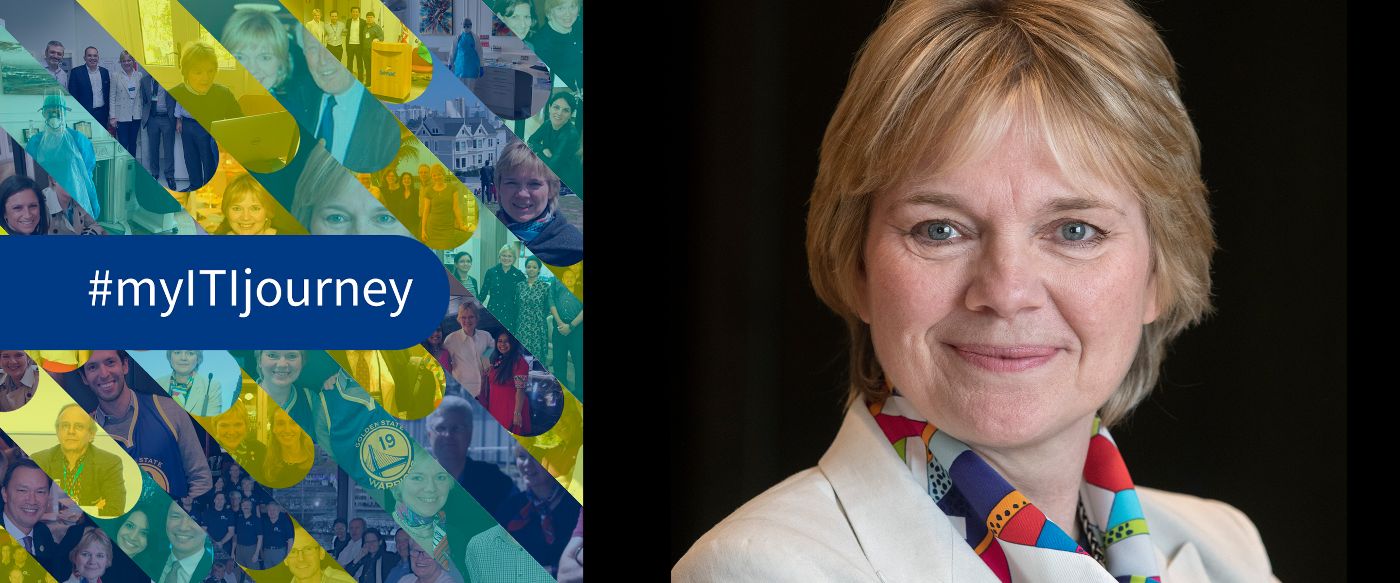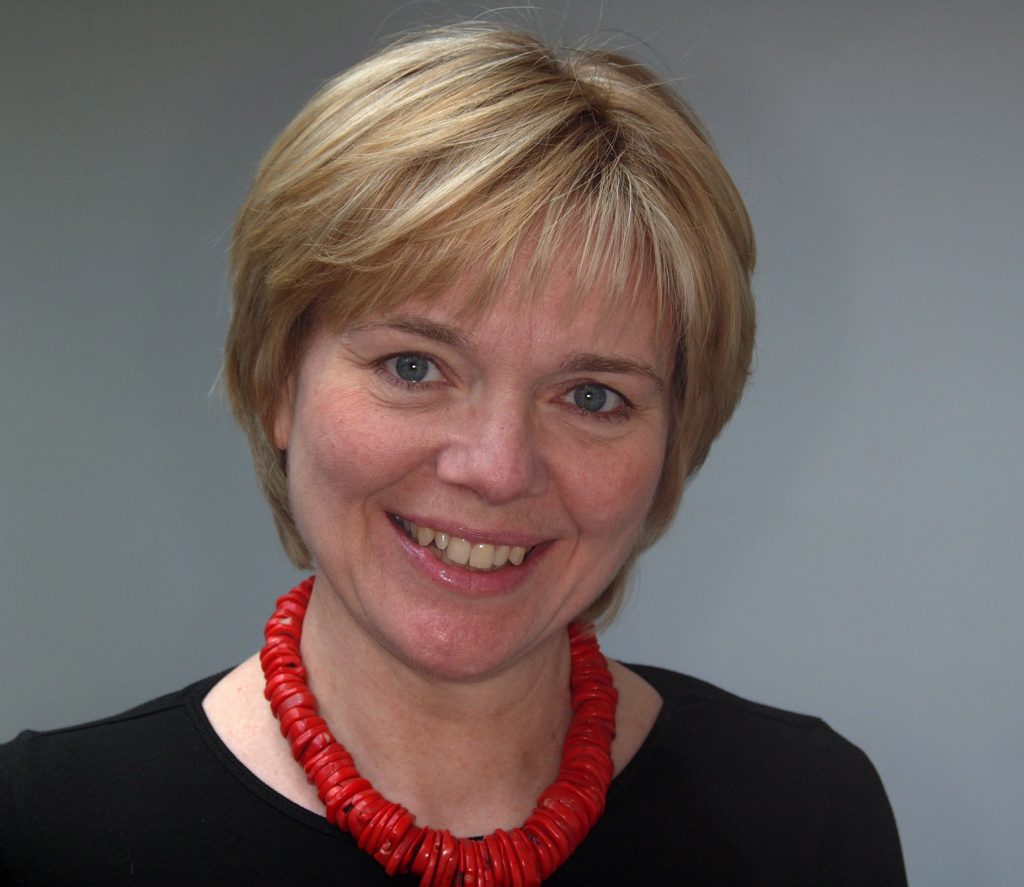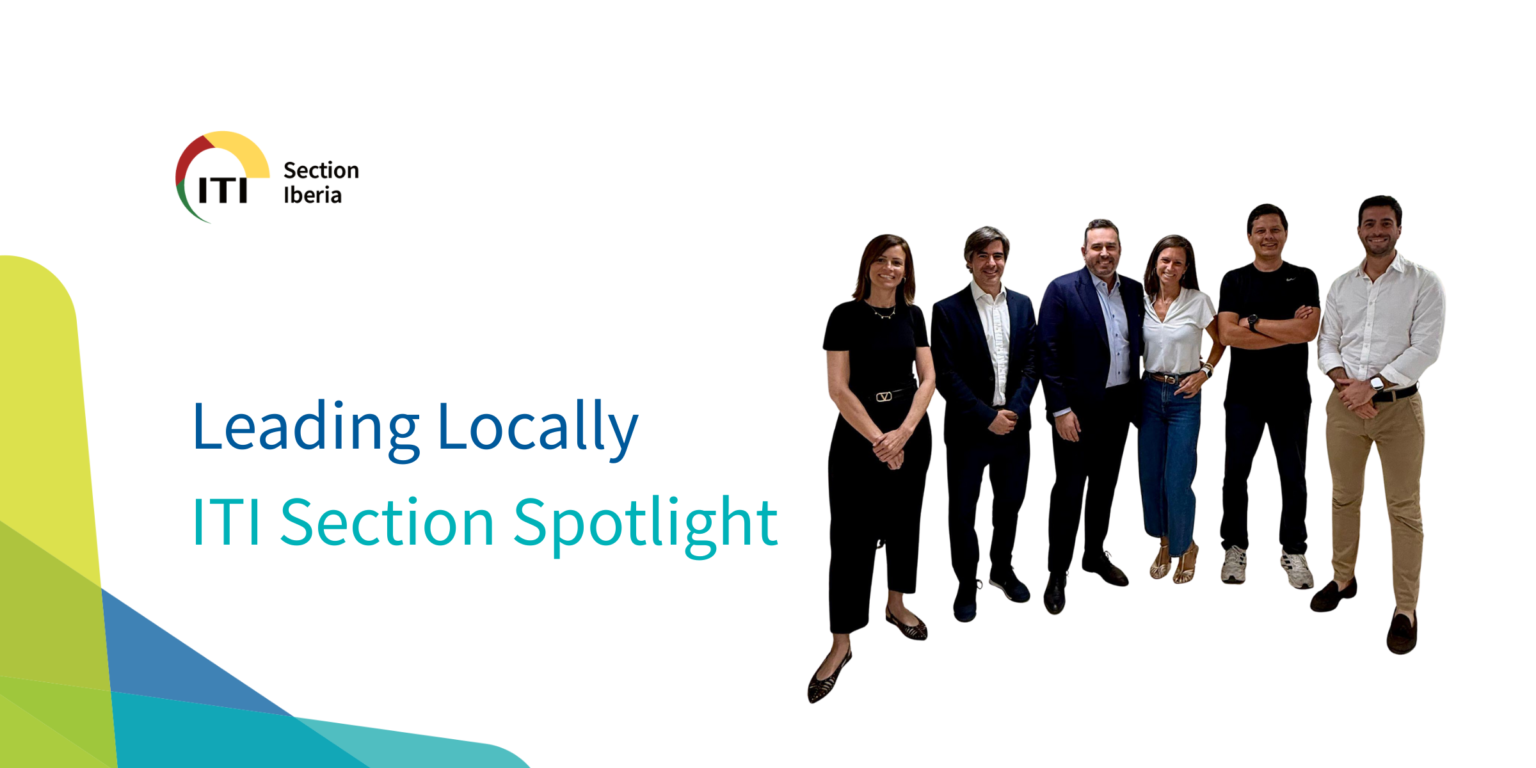Following her inauguration as ITI President during the ITI Annual General Meeting in April 2021, Charlotte Stilwell talks about her past, present and future with the ITI.
You have been an ITI Fellow since 2007 and very active on different levels. What attracted you to the organization and kept you engaged and involved?
My implant therapy mentor was an ITI Fellow and my increasing curiosity about the ITI coincided with the expansion of the membership category in the early 2000s. My first experience of the ITI and its international network of very experienced implant users dedicated to developing and maintaining excellence in implant therapy was at the World Symposium in Munich in 2005 (also the ITI’s 25th Anniversary) and I was very impressed. Whilst there, I was therefore thrilled to be invited to become an ITI Speaker for the UK & Ireland Section to address removable implant overdenture solutions. I was very pleased when this was followed in 2006 by an invitation to also teach on the Section’s restorative foundation course.
I soon found that I was very interested in how the format and curriculum of the then Section two-day surgical and restorative foundation courses could be optimized and standardized. To my mind this was the opportunity to provide others with the structured start in implant dentistry that was not available to me when I first became involved in implant therapy in the mid-1990s. I was delighted, therefore, when I was asked in 2008 to head up a task force looking at how the Section foundation courses could be brought in line with the new UK Training Standards for implant dentistry. In continuation of this task force role, I became the Section Education Delegate in 2009, and the UK & Ireland Section Foundation in Implant Dentistry program (FID for short) was launched in 2010. It was a true collaborative effort with most Section Fellows contributing in one way or another through six working groups to defining the curriculum for a course made up of six two-day modules together with concomitant one-to-one practice-based mentoring. The only thing missing was a dedicated course program textbook that we felt would have to be a project at international level. Fortunately, ITI President Danny Buser and Education Committee Chair, Stephen Chen, visited the Section the same year and in response to our presentation of the FID concept invited me to join the international Education Core Group (ECG). It transpired, of course, that both Danny and Stephen had similar plans for the ITI to support the entry level to implant dentistry. By 2012 the concepts for the ITI Online Academy and ITI Curriculum were in development. I served eight years in the ECG before becoming the first Editor-in-Chief of the Online Academy followed by Chair of the ITI Curriculum Implementation Task Force.
When something catches my interest, I will invariably be keen to get involved and to contribute. The ITI with its clear philosophy, powerful reach and open-door welcome at all levels has proved the ideal organization for engaging and becoming involved. It has also become my professional home. I have had the immense privilege of collaborating with and learning from so many gifted colleagues over the past 16 years, nationally and internationally, and there is no doubt that this has sustained my keen interest not only in implant dentistry but also in dentistry overall and offered exciting, new and unforeseen opportunities.
Traditionally, the ITI has primarily addressed implant dentistry specialists and dental practitioners. Is your focus now broadening beyond this group, i.e. are there any further dental groups you would like to reach and how are you approaching them?
Yes. The ITI is the International Team for Implantology and that team includes all who contribute to the care of implant patients. In addition to an interdisciplinary approach, I could not conduct my daily patient care without the assistance of my dental nurse, provide the prosthodontic reconstructions without my dental technicians or ensure regular continuing care without my hygienist. I am delighted to hear reports back from the ITI Sections that there is great interest from these team member groups and initiatives are already under way to be the go-to implant organization for them too.
Life-long learning is an important part of the ITI’s mission. How does the ITI support this in practical terms now and in the future?
With the ITI Curriculum, the ITI can offer a structured learning pathway that starts at the very beginning of involvement in active provision of implant therapy. In addition to staged certification at three levels, it is supported by the wealth of content available to members in the ITI Academy and peer support and networking in the local edition of the global network of ITI Study Clubs. The new Dental Practice Management course developed by the ITI in conjunction with the prestigious IMD Business School in Lausanne is aimed at optimizing the business model for underpinning implant therapy practiced in line with the ITI philosophy as is the expanding ITI Education Week program at top universities around the world and the ITI Congresses and World Symposia.
Does the ITI provide any kind of bridge between research and practice?
This is an area that is being addressed both in the forthcoming ITI World Symposium 202ONE and the next ITI Consensus Conference in 2023 as well as the new 2022 online format of Forum Implantogicum. All three have a patient and daily practice-oriented focus. At the World Symposium 202ONE, seven patient scenarios pose the questions to be addressed and debated amongst the invited presenters. Similarly, the focus groups in the 7th Consensus Conference will seek to answer questions posed from the perspective of clinicians and patients and therefore with direct relevance to daily practice. Forum Implantologicum will report on the proceedings as they unfold in the run up to, during and after the Consensus Conference. The Forum will also ongoingly examine hot/trending topics in research and report on progress of ITI-funded research projects.
You have often spoken of the importance of access to routine implant care. What does this involve, how can the ITI drive this and who would be the main audience?
This is indeed an area that warrants careful and urgent attention. With 25 million implants placed annually, there is a need for every dentist and hygienist/therapist to feel comfortable around the implants they will undoubtedly encounter in increasing numbers in daily practice. Not all clinicians will wish to become active in provision of implants but as part of routine dental assessment, they should feel able to evaluate implants and their restorations and detect any signs of concern. As one example of how the ITI can drive this process, it offers free virtual ITI Academy Campuses to all universities which in turn can be populated with the learning content designed to fulfill this need for education at both pre-graduate and postgraduate level. Another example is to assist our membership through provision of appropriate information and educational content for their patients.
For you, what makes the ITI stand out from other academic dental organizations?
The answer to this must be its clear philosophy. For a dental professional active in implant therapy, this philosophy represents a standard of practice, commitment to patients and professional behavior that goes beyond personal success and provides a professional home within a community of likeminded colleagues, globally and locally.
In addition, it offers numerous opportunities and support for progressing in implant therapy, and contributing to the world’s largest international implant organization at both global and local levels.
What are you personally most looking forward to over the next four years?
I am looking forward to meeting the global ITI Community and anyone who wishes to join it. I will assist in any and every way I can with spreading the ITI philosophy and nurturing the ITI spirit and sense of belonging.






